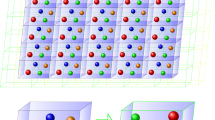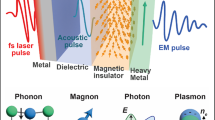Abstract
This is a continuation of a series of papers on the concertina pattern. The concertina pattern is a ubiquitous metastable, nearly periodic magnetization pattern in elongated thin film elements. In previous papers, a reduced variational model for this pattern was rigorously derived from 3-d micromagnetics. Numerical simulations of the reduced model reproduce the concertina pattern and show that its optimal period \({\widehat{w}_{opt}}\) is an increasing function of the applied external field \({\widehat{h}_{ext}}\) . The latter is an explanation of the experimentally observed coarsening. Domain theory, which can be heuristically derived from the reduced model, predicts and quantifies this dependence of \({\widehat{w}_{opt}}\) on \({\widehat{h}_{ext}}\) . In this paper, we rigorously extract these heuristic observations of domain theory directly from the reduced model. The main ingredient of the analysis is a new type of estimate on solutions of a perturbed Burgers equation.
Similar content being viewed by others
References
Bergh, J., Löfström, J.: Interpolation spaces. An introduction. Springer-Verlag, Berlin. Grundlehren der Mathematischen Wissenschaften, No. 223 (1976)
Cantero-Álvarez R., Otto F.: Critical fields in ferromagnetic thin films: identification of four regimes. J. Nonlinear Sci. 16(4), 351–383 (2006)
Cantero-Álvarez R., Otto F.: Oscillatory buckling mode in thin-film nucleation. J. Nonlinear Sci. 16(4), 385–413 (2006)
Cantero-Álvarez R., Otto F., Steiner J.: The concertina pattern: a bifurcation in ferromagnetic thin films. J. Nonlinear Sci. 17(3), 221–281 (2007)
DeSimone, A., Kohn, R.V., Müller, S., Otto, F.: Recent analytical developments in micromagnetics. In: Bertotti, G., Mayergoyz, I. (eds.) The Science of Hysteresis, vol. 2, chap. 4, pp. 269–381. Elsevier Academic Press (2005)
Georg K.: Matrix-free numerical continuation and bifurcation. Numer. Funct. Anal. Optim. 22(3–4), 303–320 (2001)
Lions, J.L., Magenes, E.: Problèmes aux limites non homogènes et applications. Vol. 1. Travaux et Recherches Mathématiques, No. 17. Dunod, Paris (1968)
Melcher C.: The logarithmic tail of Néel walls. Arch. Ration. Mech. Anal. 168(2), 83–113 (2003)
Oleinik O.: Discontinuous solutions of non-linear differential equations. Amer. Math. Soc. Transl. 26(2), 95–172 (1963)
Otto F.: Optimal bounds on the Kuramoto-Shivashinsky equation. accepted by J. Funct. Anal. 257(7), 2188–2245 (2009)
Otto, F., Steiner, J.: The concertina pattern—from micromagnetics to domain theory. SFB Preprint 429 (2009)
Pego R.L.: Compactness in L 2 and the Fourier transform. Proc. Am. Math. Soc. 95(2), 252–254 (1985)
Seis, C.: Instability of blocked states in ferromagnetic thin films. Diploma thesis, Universität Bonn (2008)
Steiner, J.: Reduzierte Modelle für dünne ferromagnetische Filme: Analysis und Numerik. Diploma thesis, Universität Bonn (2006)
Author information
Authors and Affiliations
Corresponding author
Additional information
Communicated by L. Ambrosio.




